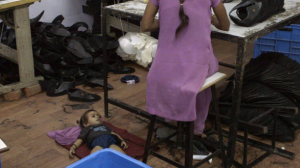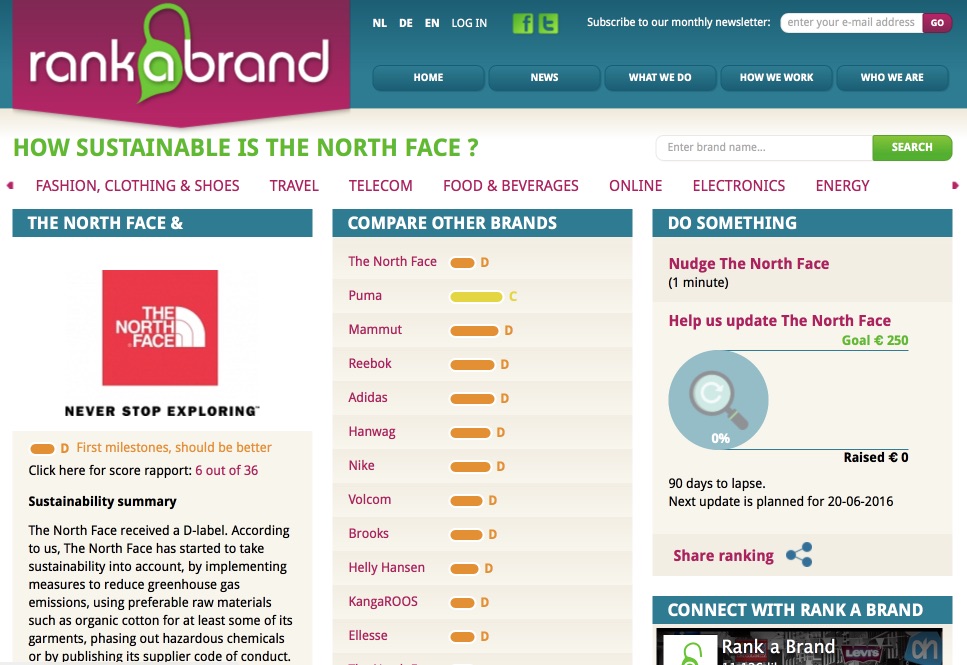We’ve all seen amazing documentaries like The True Cost, which reveal the horror and death behind industries like fast fashion. After watching them we are angry and righteous, but we are also overwhelmed. What are we supposed to do with this new knowledge? Here are three things to know about buying ethically sourced products: silence is death, codes of conduct are bullish*t, and charity can be a smokescreen.
Wouldn’t it be great if everything we bought came with a little scorecard that said “To make this sweater, we dumped 3 litres of untreated wastewater into a river that serves as drinking water for 300 people, including 60 families and 135 children. If thirty people buy this sweater, 3 children will be born with spina bifida, and 1 child will develop cancer at the age of 5.”

Or, “Inorganic cotton means that we spray our plants with RoundUp, whose key ingredient, glyphosate, is linked to microcephaly and cranial deformations, the same effects of the Zika virus.”
Or, “If thirty people buy these shoes, two women won’t have to choose between sending their kids back to live with relatives or bringing them to work, where they will develop asthma and get no interaction for eight hours a day.”
It sounds crazy, but it’s completely possible to obtain the information that would go into these labels. For obvious reasons, companies want you to think it’s impossible. They’re artists in the magical skill of misdirection.
The good news is that there are three very non-magical ways you can reassert your power as a consumer:

1) Buy from transparent companies,
2) See through the bulls*t. Codes of Conduct are one of the magic tricks that companies use to make you feel better about buying from them.
3) Recognize that charity can be a smokescreen.
The easiest way to find out if you’re making a responsible purchase is to go to rankabrand.org, and search for the company. Rankabrand.org grades big companies in three areas: Climate Change/Carbon Emissions, Environmental Policy, and Labour Conditions. I like Rankabrand because they are detailed and rigorous, while making the information easy to digest.
If the company isn’t yet featured on Rankabrand, you can do a quick search for the company’s website. We’ve been doing a lot of this as we search for sustainable companies to feature on Nomadica. Here’s what we’ve learned:
No information = Poverty, Pollution, and Death.
Another way companies make you think your purchase has no implications other than your awesome fashion sense is to be mysteriously silent about everything that goes into their product. If a company has zero information about its sourcing, you can be sure that they are actively harming people. Companies that care about their effect on the world are proud that they care, and they tell you about what they’re doing to make a positive impact.
I would rather buy from a company with a D rating on Rankabrand than a company with zero information. The D rated company has disclosed its practices, and is making an effort to change. The first battle to win in regaining our power as consumers is to demand transparency.
If the company isn’t on Rankabrand, do a google search to find its website. Go right to the About page, which is usually on a bar at the top, or in small print down at the bottom. Read the first paragraph on that page. If it doesn’t mention anything about ethical, sustainable, or environmental consciousness, they’re not thinking about it. If they’re not actively thinking about sustainability, what they are thinking about is the price it takes to source their materials, and the volume at which they can demand production, two factors which directly contribute to death and poverty when not deliberately planned. If the brand doesn’t even have an About page, this is a huge “Beware of Rabid Dog” sign on the fence. There is no such thing as a neutral purchase.
By the way, don’t Believe in Non-Web Presence. We live in an age when dogs have blogs and our parents can express themselves fluently in emoticons. If you see a clothing brand that doesn’t look like it has a website, it does. The brand is owned by another bigger company, and if you can find that company’s name, it has a website. Just because one google search doesn’t turn up anything, don’t give up on trying to find out about a company’s practices. It’s only one or two more google searches away.
Codes of Conduct are Bullsh*t
Many companies are savvy enough to know that they can appeal to customers by at least paying lip service to sustainability. The laziest solution is to say something like “we are dedicated to blah blah “environment,” blah, “sustainable,” and then provide zero detail about how they put their commitment into action. We should start reading this for what it is: zero committment.
As a clothing brand, it’s easy to go with a supplier who doesn’t spend any extra money on healthcare, building improvements, etc, so the manufacturer can charge less to make the product, and the brand can charge you less to buy it. It costs more to ensure that the people who make your clothing are not spending their lives inside buildings on the verge of collapse. If, as a brand, you pay that extra money, if you have to charge customers a little more, you’re going to be proud. You’ll advertise your ethical standards. Again, no information = death, and so does an empty brand promise without details to back it up.
Some companies go a little further by listing their Codes of Conduct on their website. This means that they require their suppliers to sign off on a list of best practices, which may stipulate labor conditions and environmental impacts. In a perfect world, the suppliers adhere to the codes of conduct, and no one gets hurt. In the real world, codes of conduct are bullsh*t, and in some cases are even worse than zero information. Here’s why:
What happens if a company makes its suppliers sign a code of conduct, but continues to demand the same price point they would have without the code of conduct? Because it costs a supplier money to comply, codes of conduct will be ignored unless they have teeth, and carry the real threat of dropping suppliers for non-compliance. In many cases, the code of conduct is designed to be ignored. Sad, but practical. If anyone decries a brand for a building collapse, a child cancer rate, etc, they can point to their codes of conduct, and blame everything on the supplier. But because they don’t enforce it, they get the same low manufacturing prices. The people who pay for this are the workers, and you. You read the codes of conduct and think your purchase dollars are going toward a good cause.
A code of conduct means absolutely nothing unless it’s accompanied by unscheduled audits conducted by accredited third parties. When a company says it “reserves the right” to show up at a supplier without advanced notice, that’s not good enough. They should tell you exactly how often they audit and whether they use an accredited third party. You can assume that unless this is happening, the code of conduct isn’t worth the sheet of paper it’s typed on. And because you have the power, you say what’s good enough. Codes of conduct are not good enough.
Take a look at this page on the website of VF Corp, the owner of Lee jeans. Lee actually gets a D rating on Rankabrand.org, but you can read about their entire auditing process, their environmental goals, and all of their company policy. They have a lot of work to do, but they’re transparent. This level of transparency should be a minimum requirement from every company we buy from.
Charity is a Smoke Screen
Every big company has a charitable arm. Charity is a part of any sensible marketing strategy and that’s fantastic, but it also makes it easier for big companies to look good when they may still have terrible supply chains. Charity and philanthropy are not substitutes for ethical sourcing. Further, it’s harder to assess whether or not a charity is actually making a real difference. You have to track how a charity is spending its money. Taking this into account and adding the fact that a company could be supporting charitable projects while wreaking havoc with terrible labor and environmental policy, a company with zero charity could have a better overall impact on the world than a company with charity and unethical sourcing.
Quick Guide to Making Ethical Purchases
The good news is that’s it’s not that hard to stop contributing your hard-earned dollars to killing someone else. Here are a few easy steps:
1. See if the company is listed on rankabrand.org, and what their rating is. Here is a list of brands with good ratings on Rankabrand.
2. If not, try to find the company’s About page. If they don’t mention sustainability, assume that they are actively unsustainable.
3. If they do have a code of conduct, make sure it has teeth in the form of unscheduled audits and contract cancellation for non-compliance.
4. Don’t confuse charity with sustainability.
5. If all else fails, try to buy organically farmed cotton and other natural products, avoiding synthetics that require heavy chemical processing (and probably don’t breathe as well anyway). OR, try to buy products made in first world countries whose labor laws are more stringent than poor countries who sacrifice their citizens’ lives for economic gains.

Leave a Reply